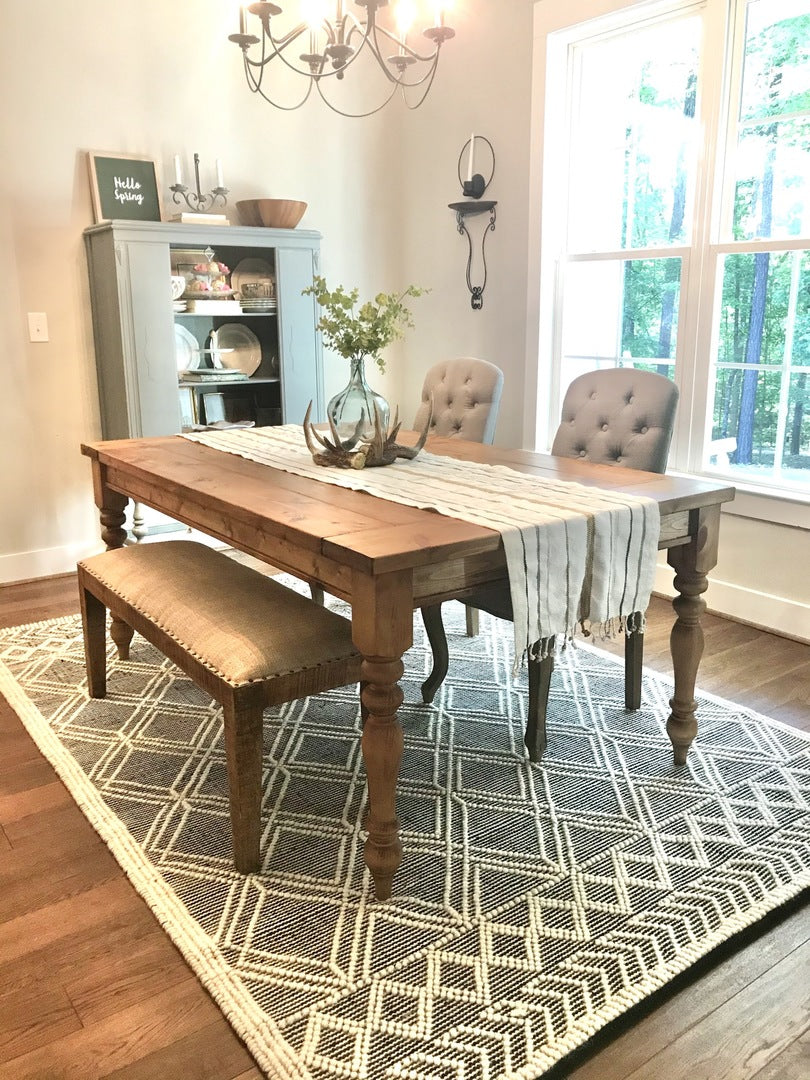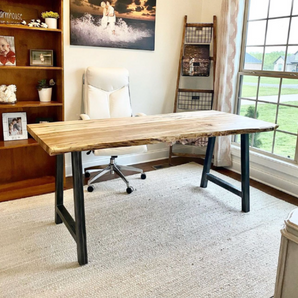Choosing the Perfect Eating Table: What Styles Work Best for Your Home?
Selecting the excellent table for your home can be a nuanced process that stabilizes aesthetic appeals and functionality. Whether your room leans in the direction of conventional style, contemporary minimalism, rustic beauty, or industrial chic, the selection of styles available can deal with diverse preferences. Each design uses unique advantages and obstacles that can either improve or disrupt your dining location's harmony. Comprehending how different products, shapes, and sizes interact with your existing style is important. To browse these choices successfully and locate a table that really complements your home, think about the complying with facets in detail.
Analyzing Your Space
Assessing the dimensions and design of your dining area is a critical very first step in selecting the ideal eating table. Begin by determining the length and size of the area, making up entrances, home windows, and various other architectural functions that could influence table placement. This ensures that your table not only fits but likewise permits comfortable activity around it.
Consider the number of people you generally captivate. A table ought to accommodate your home's daily needs while providing sufficient flexibility for periodic visitors. As a policy of thumb, allot a minimum of 24 inches of table size each to make sure a comfortable dining experience.
It's also necessary to keep ideal clearance around the table. Preferably, there ought to be at the very least 36 inches in between the table edge and walls or various other furnishings, making it possible for simple gain access to and movement. For rooms where chairs with arms or extra storage units like buffets are entailed, increasing this clearance to 48 inches is advisable.
Lights and ambience play considerable roles too. Make sure that your dining table straightens with existing illumination fixtures or prepare for sufficient lights remedies. This thorough spatial evaluation warranties that your table not only fits literally but likewise harmonizes with your space's general functionality and aesthetic.
Popular Table Styles

Conventional dining tables frequently feature ornate details, curved legs, and rich timber coatings, stimulating a sense of ageless style. They are perfect for homes with timeless style or those aiming to include a touch of elegance to their dining location.
Modern eating tables focus on simpleness and clean lines, frequently incorporating products like glass and steel. These tables are optimal for contemporary rooms, giving a smooth and minimalist look that complements minimal style viewpoints.
Rustic table, on the various other hand, emphasize natural products and a handmade appearance - dining room table legs. They typically feature reclaimed timber and a distressed finish, developing a warm and welcoming environment. These tables function well in farmhouse-style homes or those seeking a cozy, natural feeling
Industrial dining tables incorporate resources such as metal and timber, frequently showcasing a practical aesthetic. This design is well-suited for lofts or city areas, including a touch of tough beauty and toughness to the dining experience.
Each style supplies distinctive advantages, making it essential to select one that aligns with your home's general layout and your personal choices.
Product Options
When choosing an eating table, the choice of product plays an essential function in determining both the table's looks and functionality. Wood, link steel, glass, and composite materials each deal unique benefits and difficulties, making it important to straighten the material with your home's design and way of life demands.
Timber is a timeless and flexible choice, readily available in varieties such as oak, walnut, and mahogany. Understood for its toughness and heat, wood enhances both typical and contemporary interiors. Nevertheless, it needs normal upkeep to avoid scratches and warping.
Steel tables, typically crafted from stainless steel, aluminum, or wrought iron, are praised for their modern charm and toughness. They are especially suited for industrial or minimalist settings but can be prone to dents and may feel cool to the touch.
Glass dining tables bring an air of sophistication and visibility, suitable for smaller areas as they produce an illusion of more room. While very easy to tidy, glass can be susceptible to smudges and requires careful handling to stay clear of chips and splits.
Composite products, such as MDF and plywood, deal economical and adjustable services, though they might do not have the long life of all-natural products. Choosing the ideal material ensures your table is both a useful property and a visual delight.
Sizes And Shape Considerations
After identifying the suitable material for your eating table, the following consideration is selecting the appropriate form and size to match your area. The shape of the table site web considerably influences the area's aesthetic and functionality. Rectangle-shaped tables, the most usual form, are suitable for larger spaces and can suit a higher variety of guests. They also permit for a more official dining experience. Conversely, rounded tables foster a feeling of intimacy and are superb for smaller eating areas, urging discussion by removing corners and making every person feel similarly included.
Dimension is equally vital and should be determined by both the area's dimensions and the number of people you prepare to seat consistently. Generally of thumb, allot at the very least 24 inches of table width each to make certain comfortable dining. Furthermore, take into consideration the table's clearance area: there ought to go to the very least 36 inches between the table edge and the walls or other furnishings. This makes certain that diners can walk around quickly without really feeling cramped. Expanding tables supply flexibility if you often hold bigger events, giving added seats when needed without inhabiting extra space daily. Selecting the best sizes and shape makes sure both usefulness and visual harmony in your dining area.
Matching Your Design
Picking a dining table that balances with your existing style is critical in developing a cohesive and inviting area. A streamlined, minimalist table with clean lines is excellent for a contemporary home, while a vintage, luxuriant table suits a much more typical setup.
If your decoration includes cozy tones and all-natural products, take into consideration a wooden table to enhance the organic feel. Conversely, a glass or metal table may be much more proper in an area controlled by trendy shades and commercial components.
Texture plays an essential role. A rough-hewn, reclaimed wood table can include personality to a rustic area, while a refined marble surface area can raise an extravagant eating area. Lastly, consider the scale and percentage of the table in relationship to click this link the space size and existing furniture. A well-matched table not only improves visual allure yet likewise enhances the overall eating experience.

Final Thought
Picking the perfect table demands mindful consideration of space, style, products, form, and dimension (dining room table legs). Traditional tables complement classic interiors with rich wood surfaces, while modern-day tables match modern setups through glass and steel. Rustic layouts present warmth using natural materials, and industrial styles enhance urban environments with raw elements. Harmonizing the dining table with existing design guarantees both performance and visual charm, contributing to a cohesive and aesthetically pleasing dining area.